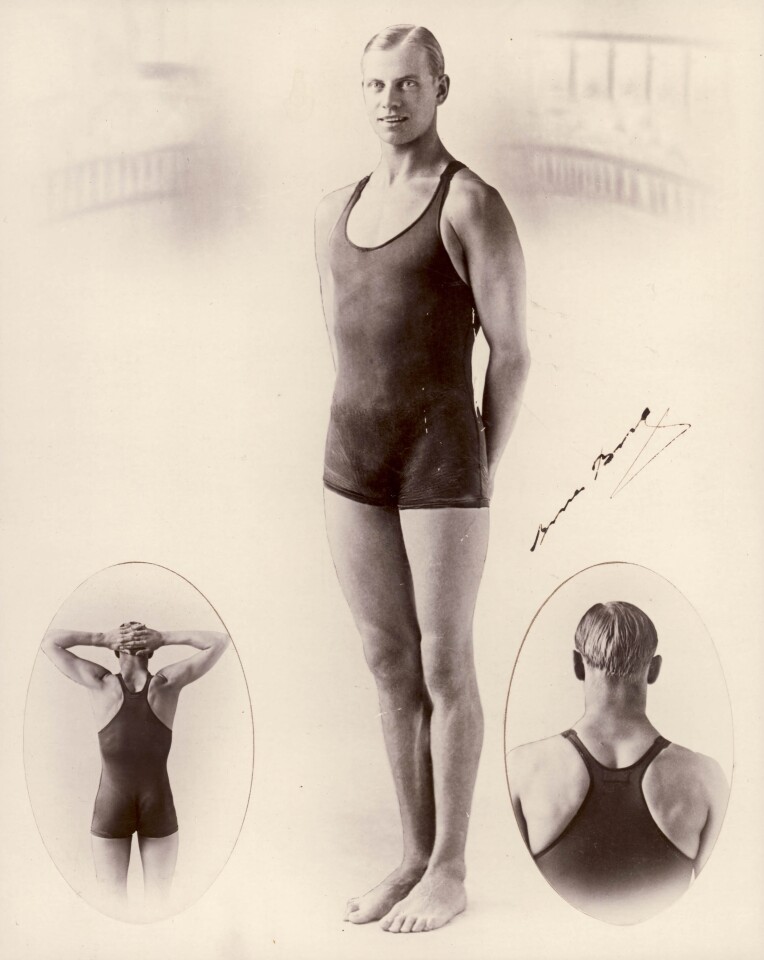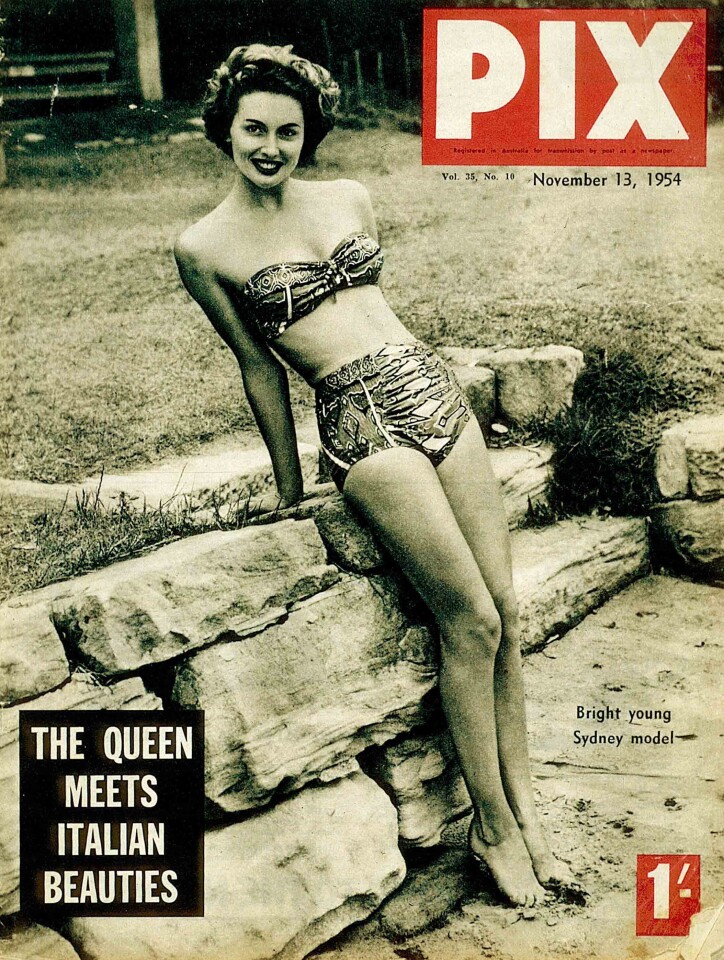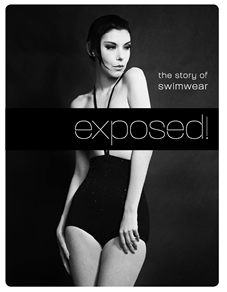Swimwear fashion has progressed steadily over the past 100 or so years (if you discount Borat’s mankini). Design has moved from neck-to-knees woolen garments that women were encouraged to bathe in at the beach, to men’s Speedos, to skimpy Brazilian thongs, to Daniel Craig’s James Bond swimmer boxer trunks, to full body racing ‘buoyancy’ suits for Olympians. Who could forget screen sirens Esther Williams, Jane Mansfield and Marilyn Monroe posing in their swimsuits? To celebrate Australia’s contribution to the swimwear industry – in design and materials – a comprehensive exhibition titled "Exposed! The story of swimwear" is traversing that country, appearing at State museums.
Developed by the Australian National Maritime Museum in Sydney, Australia, the collection of swimwear garments, posters and memorabilia, magazine covers of the times, and a thorough history lesson in swimwear attire, is attracting healthy crowd numbers.
Australia, with its major cities situated along its seductive coastline of pristine beaches, clean water, good surf and a climate conducive to year-round swimming in some parts of the country, has been a fertile breeding ground for fashion and material design and experimentation in the swimwear industry ever since people went down to the water to enjoy themselves.
Lindl Lawton, Senior curator at the South Australia Maritime Museum, which is currently hosting the exhibition, says: “Swimwear has come a long way if you look at what women and men were wearing in the 1900s,” she says. “The Australian National Maritime Museum had been collecting the swimwear over many years but had nowhere to display it. So it decided to make the exhibition a traveling one and now it’s our turn to host it.”
Modest beginnings
Lawton explains that around the year 1900, modesty prevailed in society a lot more than it does now.
“Women didn’t swim back then,” she says. “They ‘bathed’ in the ocean. Swimming was something men did – and they used to do it naked before beaches became more populated and women arrived on the scene. It would have been almost impossible for women to swim anyway because they wore long woolen bathing suits that must have weighed a lot once they got wet and would also have been incredibly uncomfortable.
“But Annette Kellerman – a champion Australian swimmer and film star changed all that. Between 1909-1924 she made 12 films, five as a leading lady either as a mermaid or action hero doing underwater feats in men’s clothes. She was pro-active in promoting functional swimwear for women and scandalously donned a full body stocking (male) to swim.

“The exhibition showcases several of her spectacular stage costumes. In 1907 she was arrested in Boston, Mass., for wearing a one-piece, sleeveless, thigh length men’s-style bathers while working at a beach-side amusement park.”
Lawton says the exhibition details how the swimsuit transformed into a sporting and fashion garment after World War I, led by nations like France, the US, Britain and Australia.
It wasn’t until the 1930s that wool began to make way for better-suited materials like Lastex – an elasticized yarn used for swimsuits that was a forerunner lycra.
Well-known swimsuit company Speedo originated in Australia in 1914, but didn’t become known by its now famous brand name until 1928. The company was started by a young Scot named Alexander MacRae, who migrated to Australia in 1910 and set up an underwear manufacturing business called MacRae Hosiery Manufacturers. MacRae quickly expanded his operations to include swimwear. He then changed the name to MacRae Knitting Mills.

“The racer-back (narrow back panel with Y shaped shoulder straps) was invented by Speedo in 1927 to reduce fabric drag,” says Lawton. “It was famously worn by Swedish gold medalist Arne Borg in the Amsterdam Olympics in 1928.”
In 1955, Speedo introduced the use of nylon for their racing swimwear. Speedos/‘sluggos’ – were created by Australian designer Peter Travis in 1960 for his first collection for Speedo. Sitting on the hip rather than waist, this was a revolutionary new look for men’s swimwear. Speedo was also responsible for the controversial LZ Racer Fastsuit which made its debut in 2008 Beijing Olympic Games with input from 100 elite swimmers. So tight-fitting that it can take up to 15 minutes to put on and just as long to remove its seams are welded rather than sewn.
“Statistically, 94 percent of swimming gold medals at those Olympics were won by swimmers wearing the suit, raising questions about its performance-enhancing qualities,” says Lawton, quoting figures from the exhibition.
Behold the bikini

The bikini was designed by French designer Louis Reard in 1946. An explosive innovation in swimwear, it was aptly named after the atoll in the Marshall Islands where the US was testing the atomic bomb. Reard’s bikini was made from four triangles of cotton printed with newspaper type and fitted into packaging the size of a matchbox.
“Reard famously quipped ‘a bikini is not a bikini unless it can be pulled through a wedding ring’,” laughs Lawton. “There’s also another famous quote by American author and humorist, Garrison Keillor: ‘A girl in a bikini is like having a loaded pistol on your coffee table - there’s nothing wrong with them, but it’s hard to stop thinking about it.’”

Lawton adds that Australian designer Paula Stafford began making swimwear in the late 1940s and popularized the French bikini in Australia with bandeau tops and sarong wrap bottoms. In the 1950s she opened a boutique in Surfers Paradise, Queensland, called the Paula Stafford Fiesta Tog Shop that provided clients with a 24-hour made-to-order service.
Apparently, customers would attend the shop to be personally measured and fitted for their swimwear – nothing was off-the-rack.
Fashion moments
- Ursula Andress’ white bikini, complete with hip-holstered dagger, as the Honey Ryder character in the 1961 James Bond movie, Dr No.
- ‘Thong’ unisex design appeared on the beaches of Rio de Janeiro in the 1970s. – nicknamed ‘dental floss’.
- Daniel Craig, as James Bond, emerging from the water in his La Perla swimmer boxer trunks in Casino Royale (2006).
A Burkini for Muslim (origins unknown) has recently been released. Though not fashioned in the ‘bikini’ style, its materials allow Muslim women to swim or bathe modestly.
Fashions that didn’t take on

- Rudy Gernreich’s monokini was designed in 1964 – it was basically a topless swimsuit for women. Of the 3,000 produced, few were ever worn. Denounced by the Vatican, the bold design ignited worldwide debate over women appearing topless while swimming or sunbathing, says Lawton.
The exhibition has already been to Sydney and Fremantle and after Adelaide will continue to Brisbane and Wagga Wagga, before finishing in Newcastle on February 6, 2011.


























